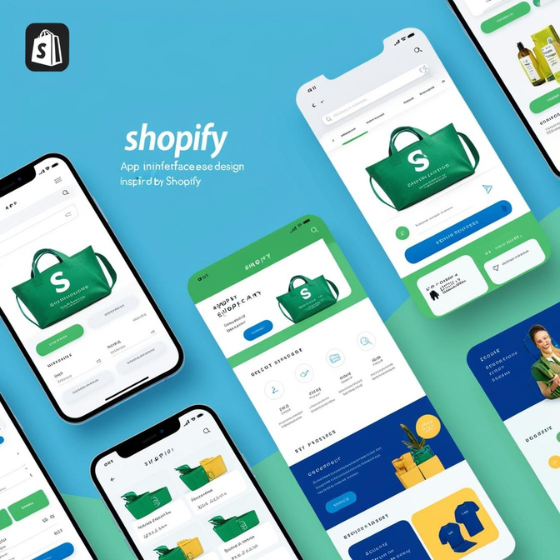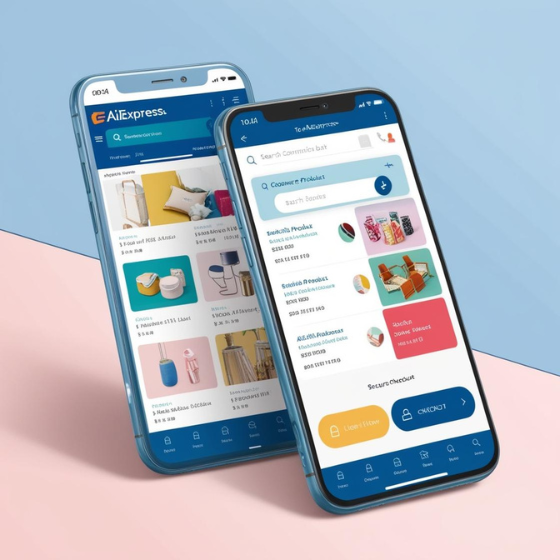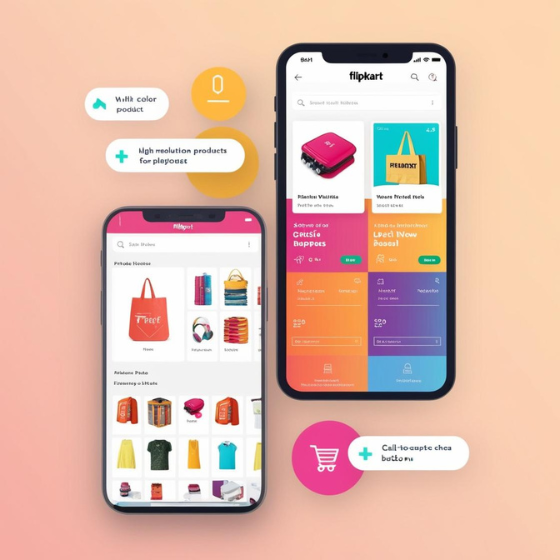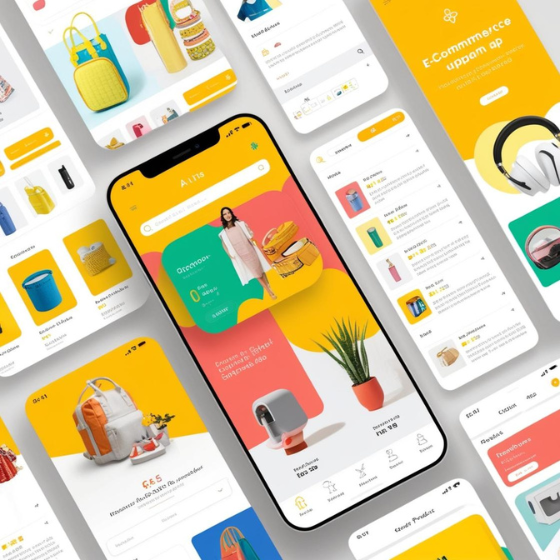How to Make an App Like Shopify
Did you know that Shopify powers over 4 million online stores globally? With e-commerce continuing to skyrocket, entrepreneurs and businesses are increasingly looking to create platforms like Shopify that enable anyone to build, manage, and scale their online stores. If you’re wondering how to make an app like Shopify, you’ve come to the right place.
In this blog, we’ll walk you through the entire process of building an app similar to Shopify, covering everything from initial planning to key features, technology stacks, and growth strategies. Whether you want to create a niche marketplace or an all-in-one e-commerce solution, this guide will give you the insights you need to develop a Shopify-like app. By the end of this blog, you’ll have a solid understanding of how to bring your vision to life, while also learning how to leverage technology to provide a seamless user experience.
Why Build an App Like Shopify?
E-commerce is one of the most rapidly growing industries today. In 2023, global retail e-commerce sales were projected to surpass $6 trillion, and that number is expected to continue rising. Shopify, a major player in this space, allows users to quickly launch and manage their online stores with minimal technical expertise. The question remains: how to make an app like Shopify that provides the same seamless experience for users?
Creating an app like Shopify offers several significant advantages, including:
- A global reach: With the rise of digital commerce, platforms like Shopify allow users to tap into global markets.
- Ease of use: Shopify’s intuitive design makes it easy for entrepreneurs to set up, manage, and scale their businesses.
- Scalable growth: Shopify enables businesses to scale as they grow, offering a flexible and customizable platform that can handle increasing volumes of traffic and transactions.
Building an app like Shopify provides a lucrative opportunity to tap into this growing trend. However, it’s not as simple as replicating its features. Let’s explore the key elements needed to build a successful app that stands out in a competitive marketplace.
Step 1: Define Your Niche and Business Model
Before embarking on how to make an app like Shopify, it’s crucial to define your target audience and the type of e-commerce experience you want to provide. Shopify offers a universal platform for anyone looking to build an online store, but you may want to consider a more specialized approach.
- Identify your niche: Do you want to create an e-commerce platform for a specific industry or type of product? For example, an app like Shopify could focus on handmade goods, digital products, or services.
- Business model: Shopify is a SaaS (Software as a Service) platform, offering subscription-based plans to users. You can follow a similar model or opt for one-time payments, transaction fees, or freemium models.
Understanding your target market and business model will guide your decision-making throughout the development process. Having a clear vision of your niche and pricing structure is crucial for attracting and retaining users.
Step 2: Essential Features for an App Like Shopify
Creating an app like Shopify means offering essential features that make the platform user-friendly, scalable, and customizable. Here are some of the must-have features for any e-commerce platform:
- User Accounts and Dashboards: Allow customers and store owners to create accounts, view their orders, manage product listings, and track sales.
- Product Management: Provide a robust system for sellers to add, edit, and categorize products with pricing, images, and descriptions.
- Secure Payment Gateways: Integrate secure payment options such as credit/debit cards, PayPal, and cryptocurrency. Ensuring secure transactions is essential for building trust.
- Shopping Cart & Checkout: A smooth and intuitive shopping cart and checkout process is key to improving conversion rates and ensuring a positive user experience.
- Search and Filter Options: Allow customers to easily find products using filters like price range, category, and popularity.
- Analytics and Reporting: Offer store owners detailed insights into sales, customer behavior, and traffic. This helps them make data-driven decisions.
- Mobile Optimization: Ensure that the app is fully optimized for mobile devices. A mobile-first approach is essential for success in today’s marketplace.
- SEO Optimization: Shopify’s built-in SEO tools allow store owners to optimize their product pages for search engines. Incorporating this feature in your app will increase its discoverability.
- Custom Themes and Templates: Allow store owners to personalize their online store’s look and feel with custom themes, templates, and plugins.
Integrating these features will help you develop a comprehensive and user-friendly app. It’s important to focus on usability and design, making sure that both buyers and sellers can easily navigate and interact with your platform.
Step 3: Choose the Right Tech Stack
One of the most important aspects of how to make an app like Shopify is selecting the right technology stack. Shopify is built using a combination of front-end and back-end technologies that provide scalability, performance, and security. To replicate a similar app, here’s a breakdown of the tech stack you should consider:
- Frontend Development:
- React or Vue.js: Both are highly popular JavaScript frameworks for building dynamic and responsive user interfaces.
- HTML5, CSS3, JavaScript: These core technologies will help you create the structure, style, and functionality of the app.
- Backend Development:
- Node.js or Ruby on Rails: These are reliable and scalable back-end technologies commonly used for building e-commerce platforms.
- PHP or Python: Both are popular programming languages for building the server-side logic for online stores.
- Database:
- MySQL or PostgreSQL: These are robust, scalable relational databases that can handle large amounts of data, such as user information and product inventories.
- MongoDB: A NoSQL database that’s also widely used for handling unstructured data.
- Cloud Hosting:
- AWS (Amazon Web Services) or Google Cloud Platform: Cloud hosting ensures that your platform is scalable and can handle high traffic volumes, a necessity for an e-commerce app.
- Payment Gateway Integration:
- Integrating payment gateways such as Stripe, PayPal, and Square is essential for enabling secure online payments.
Selecting the right tech stack will ensure that your app functions smoothly, is secure, and can scale as your user base grows. The goal is to create a platform that’s both powerful and user-friendly.
Step 4: User Interface and Experience
When it comes to building an app like Shopify, user interface (UI) and user experience (UX) play crucial roles in determining its success. Shopify’s user-friendly design has played a significant role in its popularity among both novice and experienced e-commerce entrepreneurs.
- Simplicity: Focus on creating a simple, intuitive UI that allows both sellers and buyers to easily navigate the platform.
- Customization: Provide customization options for users, including themes, templates, and product page layouts.
- Mobile-First Design: Since a large percentage of users will access your app via mobile, ensure that the design is responsive and works well on all screen sizes.
- Speed and Performance: Ensure that your app loads quickly and responds efficiently to user actions. Slow apps can lead to higher bounce rates and lost sales.
Investing in a clean and intuitive design will help you create an app that users love to interact with.
Step 5: Marketing and Launching Your App
Once your app is built, the next step is launching it to the market and attracting users. Here are a few strategies to promote your app:
- Content Marketing: Create blog posts, guides, and videos that explain the benefits of using your platform. By providing valuable content, you’ll attract users organically.
- Social Media: Leverage platforms like Facebook, Instagram, and Twitter to promote your app and connect with potential customers.
- Referral Programs: Encourage users to refer others to your platform in exchange for discounts or incentives. Shopify’s affiliate and referral programs have helped fuel its growth.
- SEO: Optimize your app’s website and product pages to rank for relevant keywords like “How to make an app like Shopify,” “e-commerce app development,” and others.
A well-executed marketing strategy will help you drive traffic to your app and convert visitors into loyal users.
Conclusion: Build Your E-Commerce Future Today
Creating an app like Shopify may seem like a monumental task, but with the right strategy, features, and technology stack, it is entirely possible. Whether you’re targeting a specific niche or aiming to build a global marketplace, following the steps outlined in this blog will help you bring your vision to life.
Are you ready to create your own Shopify-like platform? At Sodio, we specialize in developing custom e-commerce solutions that meet your specific needs. Our team of experts can guide you through every stage of the development process, from ideation to launch. Contact us today to get started!







